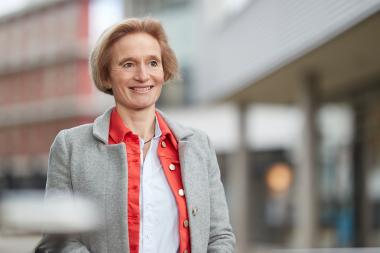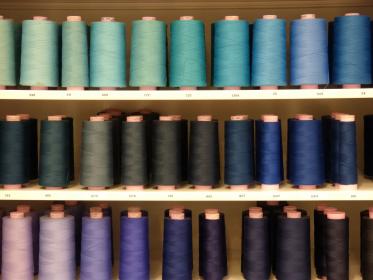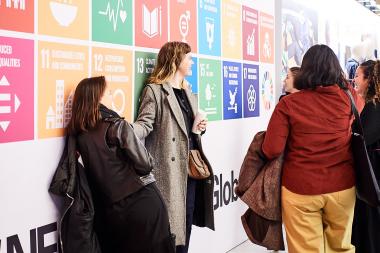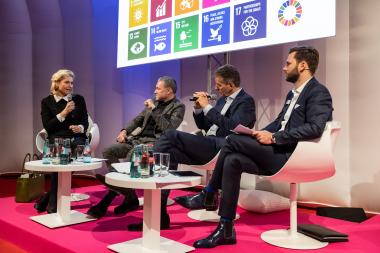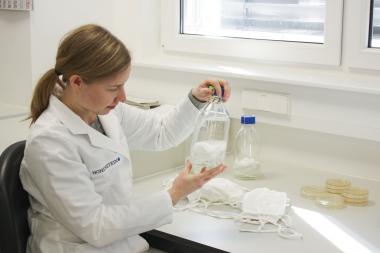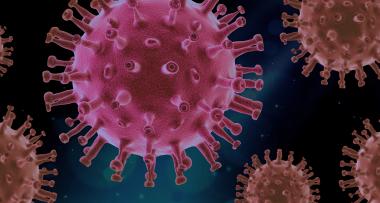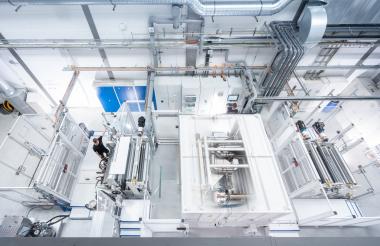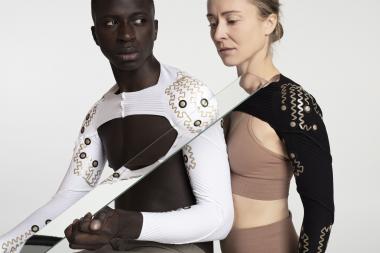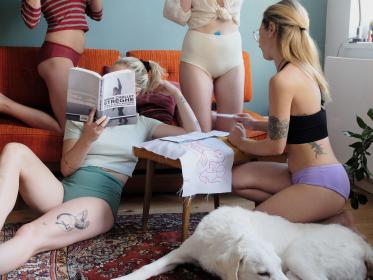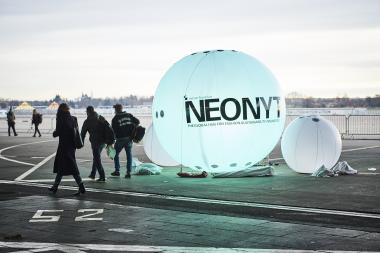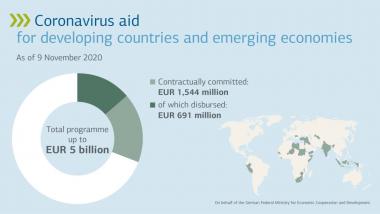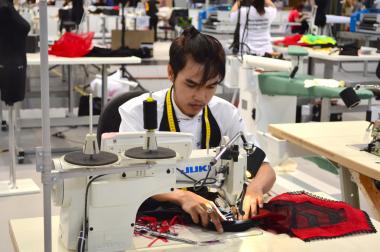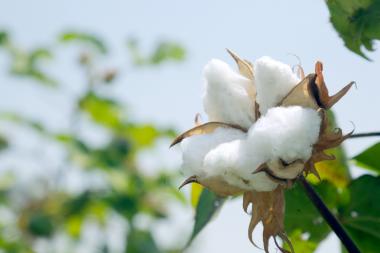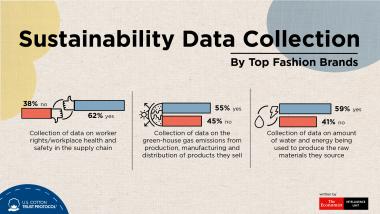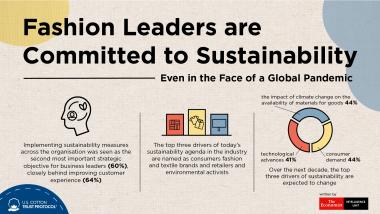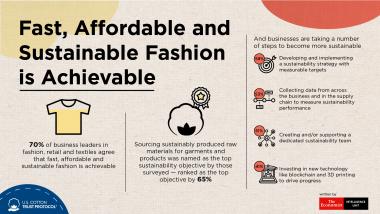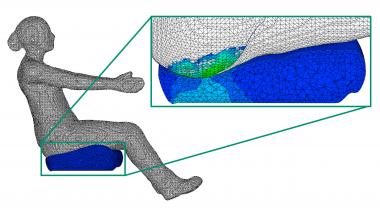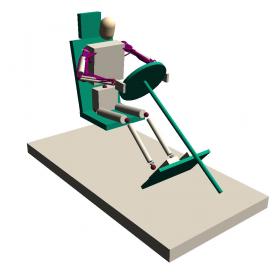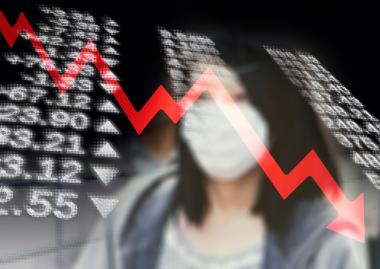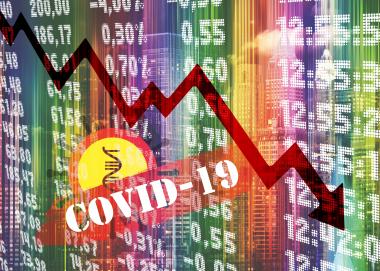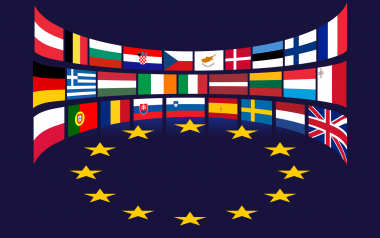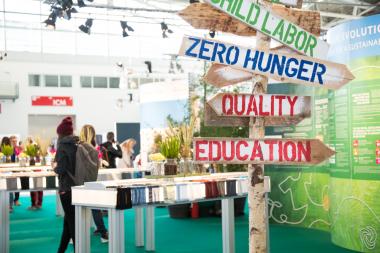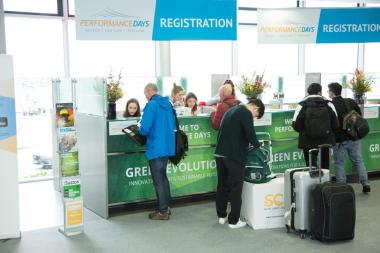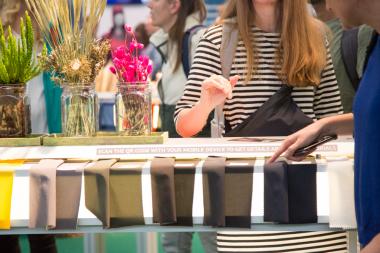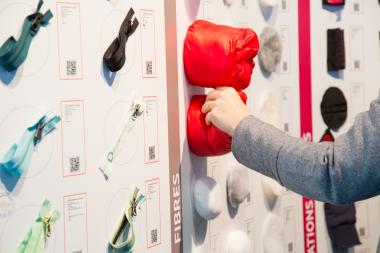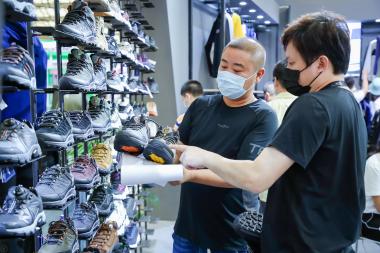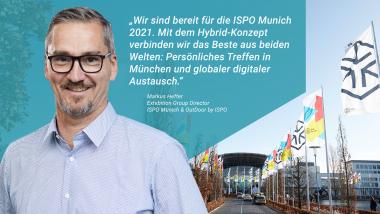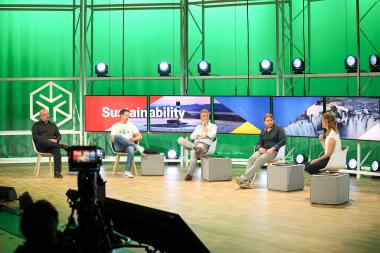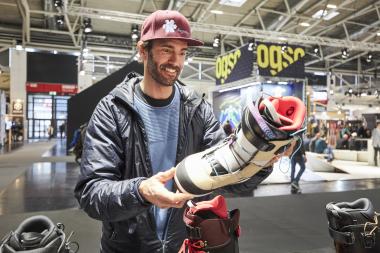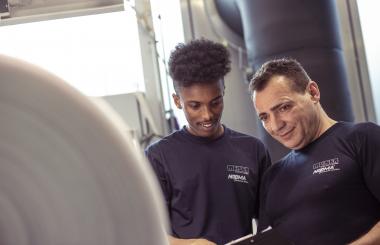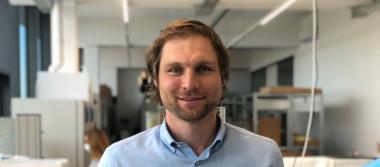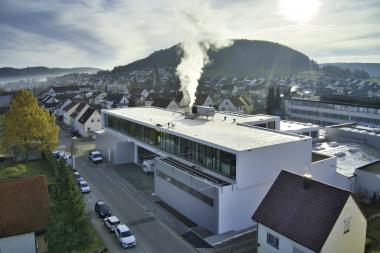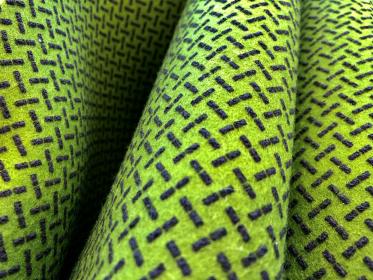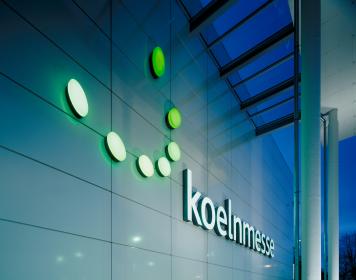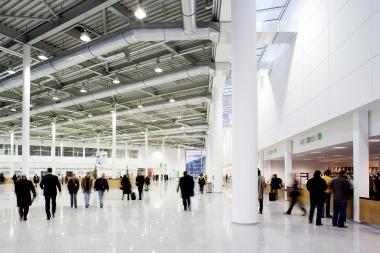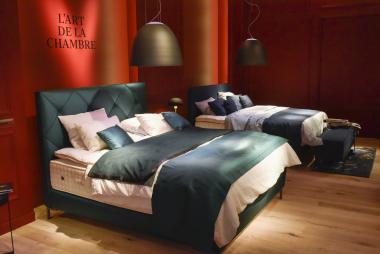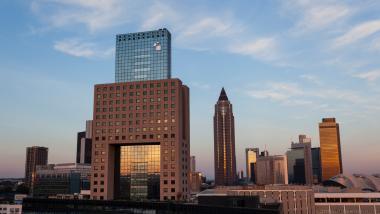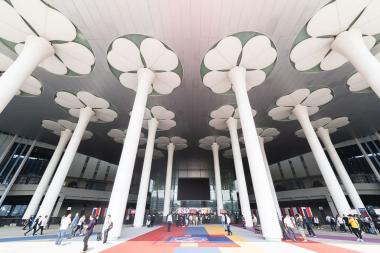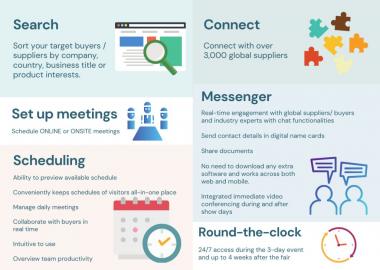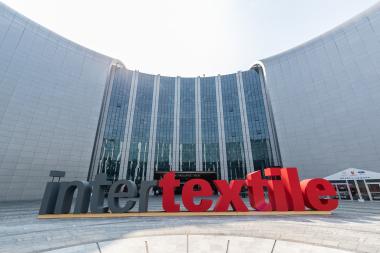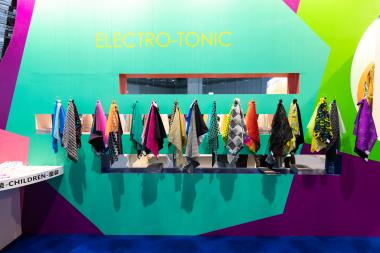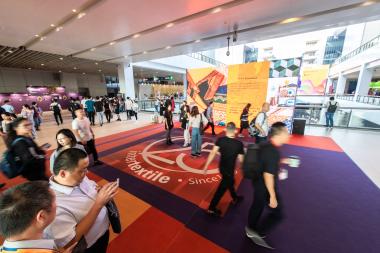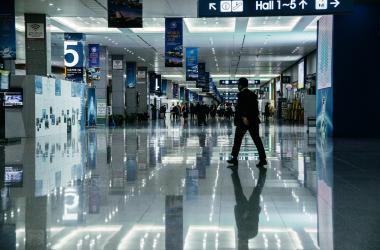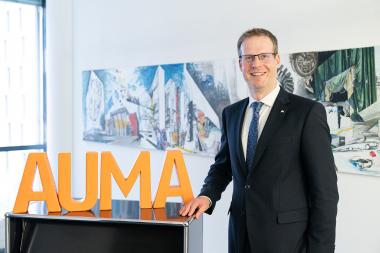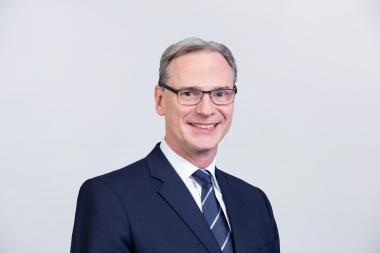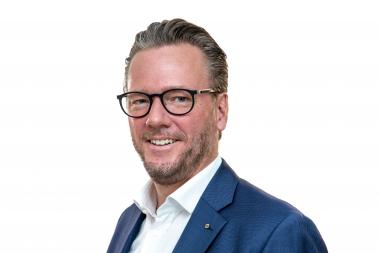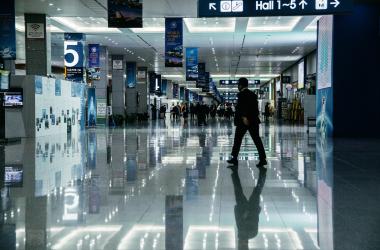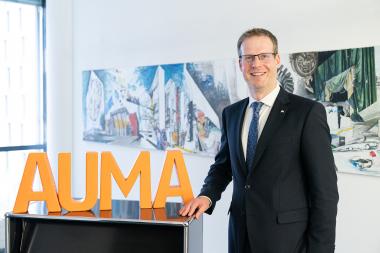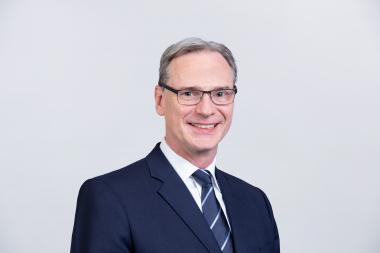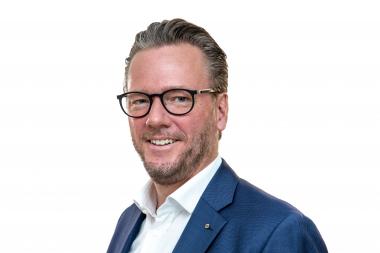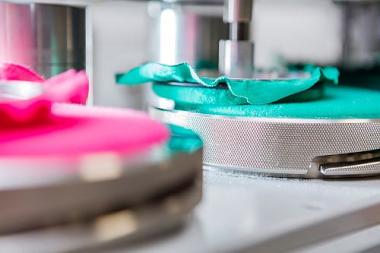Telling good Stories - PR Challenges of the medium-sized Textile Industry
Interview with Claudia Bitzer, Owner Bitzer PR, Albstadt
The past year was not only a big economic challenge for many companies, but also in terms of communication - whether in advertising or in PR topics - new ground had to be broken. Contact restrictions up to a strict lockdown, the cancellation of many trade fairs, congresses or other event formats made it necessary to rethink.
Textination discussed it with Claudia Bitzer, owner of the PR agency of the same name in Albstadt, Baden-Württemberg. Her customers include medium-sized companies from the textile and clothing industry as well as machinery manufacturers, public clients and the media.
With your PR agency based in Albstadt, you have also been busy in the textile industry for a good 5 years. If you had to introduce yourself in 100 words to someone who doesn't know you: Why did you decide to become your own boss after working for an agency, and what distinguishes your work?
Actually, self-employment gave me a call: An acquaintance suggested that I take over the communication for his employer, a textile machine manufacturer in the Alb, as a freelancer. When I was on the phone, I had our ten-day-old son in my arms. I was also a PR consultant at Ketchum in Stuttgart. Because I was curious, I got to grips with the matter over the next few months. With success: The textile machines have turned out to be surprisingly tangible products, after all, they make the clothes that we wear on our bodies every day. From this my access to the textile industry developed, which I would call my home base today.
Because I serve various companies along the textile chain, I have an overall view of the industry and can offer overarching stories with different perspectives. I also have a weakness for complex, "dusty" topics, regardless of the industry. I can delve in them with devotion in order to present them vividly. That's why I would call myself a content specialist.
In addition to German, English, Spanish and French, you speak Swabian fluently. Why is it important to have regional roots when you work for export-oriented companies in the textile industry in Baden-Württemberg?
You got that about fluent Swabian from my website, right? (Laughs) But yes, it is very helpful if you can feel whether "gschwind" – Swabian for “pretty fast” - tolerates a delay or has to be dealt with immediately.
I think the Swabian is really important in terms of the mentality behind it. I grew up in the Alb, my father ran a medium-sized company of his own. I understand many things without a customer having to explain them to me.
For example, modesty in relation to one's own person. Especially in long-established family businesses, the owners play an important role. They bear a great responsibility, both in the company and at their location. Nevertheless, the focus is always on the entrepreneurial performance, the product that, manufactured somewhere in the Swabian province, can keep up with the German, European or global competition. That doesn't happen by itself, but requires courage, entrepreneurial spirit and a great deal of openness to new things, and that fascinates me. I also often notice that by the passion, that these leading family businesses bring with them, I am carried away.
Breaking new ground means being willing to make decisions, overcoming fears - and thus also having the courage to fail. Not every project can succeed. In retrospect, which entrepreneurial decision are you particularly glad to have made?
Apart from being self-employed? The first corona lockdown with home schooling and closed daycare centers was a big challenge. On the one hand, I was relieved that it became quieter on the customer side between the end of March and the beginning of June, otherwise it would not have been feasible either professionally or in terms of family. On the other hand, this silence scared me and I often asked myself whether self-employment was the right way to go.
In early summer, when the situation on all sides had stabilized somewhat, I tackled the problem head on: I looked for co-working spaces and took extensive further training in online marketing. Being honest, of course, these were business decisions. Fortunately, they are already paying off, even if I may sit alone in the office for now.
Is there any work you are particularly proud of? Which story moved you beyond normal and which thematic challenges do you love?
One project that I fondly remember is the communication referring to a repdigit anniversary one of my clients was celebrating. For this, I first put 111 years of the company’s history down on paper in weeks, no, months of archive work. Because I had delved so deeply into the subject, I came up with many ideas for the messages of the anniversary celebration. Fortunately, the client was quickly convinced. At some point we had a signet, a slogan and a really good story for the anniversary. Incidentally, we still benefit from the numerous proof points we worked out for the occasion in our product and corporate communications today.
In addition, the project has naturally deepened the relationship with this client. I also work closely with the advertising agency that accompanied the anniversary communication. I consider such long-term partnerships as a great asset.
Have the messages you want or need to communicate for your clients changed in Corona times? And what was the focus of your work in 2020?
Unsurprisingly, the focus of work in 2020 was on online communication. For almost all of my customers we will start planning and implementing new measures in this area in the coming year.
As for the messages, little has altered. This is certainly due to the fact that the meta-topics have remained the same. Take sustainability, definitely a long-running favorite in the textile industry, and the sub-topic regionality. In contrast to previous crises, the Corona pandemic has not sidelined these approaches, but intensified them because it has shown us how dependent we are on production abroad. The same applies to the issues of transparency and quality.
Precisely because the themes have stayed the same, the crucial part for me is to find a unique story within these permanent themes so as not to disappear into the big river. That requires empathy, creativity - and a good portion of diligence.
Moving away from the simple advertising message to storytelling - what recommendation would you give medium-sized companies in general regarding their communication for the coming year? Are there any special features that the textile industry in particular should consider?
I think that will go in the direction of "We are still there, and even stronger than before". After all, the crisis demanded a lot from everyone. But it is always a productive phase, because when it comes to a head, it forces us to develop further that otherwise would not have been initiated or at least would have been initiated later. Therefore, it can represent a turning point, definitely for the better.
Take digitization, which is the most obvious approach: the crisis has given rise to a boost in this area; the online shop was or is to be expanded, the service is to become more digital.
Apart from that, there are certain individual changes in every company that the crisis has brought about. You can have the courage to name and tell them, because these are stories that interest everyone.
Goodbye Facebook - good morning TikTok. Which social media platforms do you recommend to your clients and under what conditions should medium-sized companies get involved?
TikTok has so far been more of a topic that I discuss with my daughter, who is almost 12 years old. But seriously: I recently read in a study published by Hootsuite that at the beginning of 2020, less than ten percent of Germans were using TikTok. On Facebook, the user share is still over 60 percent. For that reason alone, we shouldn't simply dismiss Facebook.
When I discuss the topic of social media with my clients, it is important for me not to think from the channels. Sure, it's tempting, but other questions should be asked at the beginning: What is the long-term goal of the social media activities? What resources are available - and what budgets? By now it is well known that social media is an extensive field of activity in its own right, which ties up corresponding resources. In medium-sized businesses, where I rarely have access to a multi-headed marketing team, a solid strategy is the be-all and end-all. It must be very, very clear which target groups are to be addressed. Then I can talk about channels and choose the most important ones. This almost certainly includes LinkedIn and Xing, as well as Instagram and Facebook, the latter especially in an international environment. By the way, the evaluation is just as important, it tends to fall behind. The relationship between measured values and corporate goals is anything but trivial.
Trade fairs, events, press conferences and meetings - these have almost completely fallen by the wayside in 2020. How important do you consider face-to-face communication to be in the long term, and which channels and measures do you recommend to your customers to compensate for these losses?
Face-to-face contact remains important! Of course, we all realised last year that not every event has to be a face-to-face event. A video conference saves time and money and, with the right discipline, can be just as effective as a face-to-face meeting. Many service cases can also be solved by video telephony, no one has to travel around. I am therefore convinced that we will not return to the meeting in person culture we had before Corona, even if this will be possible again at some point.
That's why I advise my clients to take advantage of the digital opportunities that are opening up everywhere. At the moment, everyone is still a beginner, you can only learn. Take virtual trade fairs: This is a fundamentally different approach than the classic presence fair. There is no need for a large trade fair team that is ready from 6 a.m. to 8 p.m. There are no press appointments either. It is much more important to contact the visitors directly, i.e., to collect leads, to group the visitors and to stay in touch with them after the event by providing them with tailor-made content. Speaking of content: at the latest with such online events, it becomes clear how diverse content must be prepared. To pick up customers in the virtual space, you need graphics, videos, animations and much more.
Nevertheless, it will not work without direct, physical contact. I remain convinced that people buy from people. Video conferences work particularly well when the participants already know each other from real life. And the textile industry in particular thrives on haptics. I can never feel a yarn or a fabric digitally. Nor can I feel the production speed of a machine. With every revolution there is a slight breeze. You can't get that digitally.
The interview was conducted by Ines Chucholowius, CEO Textination GmbH
Textination GmbH



